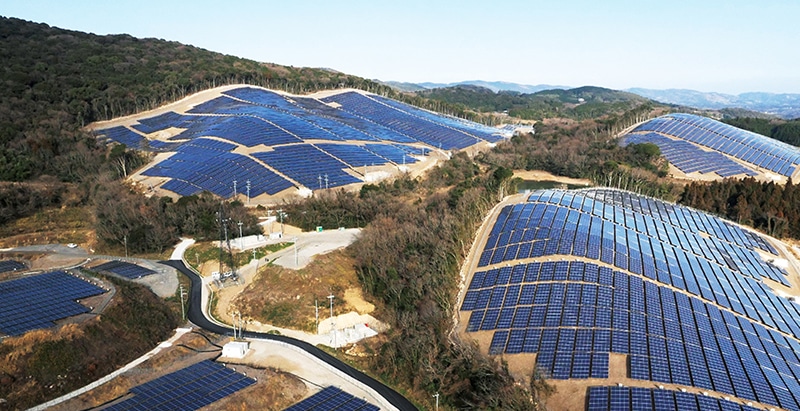Hanwha Q Cells has announced that its opening a U.S.-based solar module assembly factory in 2019. The press release states that while the exact nameplate capacity of the new facility remains undisclosed, that it will exceed 1.6 GW per year.
This is a greater annual capacity than either the factory that First Solar is planning for Ohio or the Tesla/Panasonic “gigafactory” in Upstate New York, and thus will be the largest in the Western Hemisphere.
The facility will be located in Whitfield County, Georgia, near the border with Tennessee. Hanwha officials said Whitfield County will give it benefits worth $30 million by offering free land and reducing taxes.
The company said the product supplied will be passivated emitter rear contact (PERC) modules for the rooftop and ground-mount segments in the United States. Solar cells will be supplied to the facility from the company’s South Korean manufacturing.
The Korea Times suggests that this was a last option for the company based upon prior public statements. CEO Cho Hyun-soo told reporters in January:
The government is considering bringing the case to the WTO, but I’m not sure about its effectiveness. Building our factory in the U.S. will take at least two years, so the factory may not have any benefit to us. Business downsizing in the U.S. is inevitable.
South Korea filed a complaint with the World Trade Organization regarding the Section 201 tariffs on solar panels imposed by the Trump Administration.
If the facility were to assemble 1.6 GW worth of solar modules valued at 50¢ per watt, this would avoid $200 million in import duties the 2019 tariff year, $160 million in 2020, and $120 million in the final tariff year of 2021.
The company will soon have manufacturing capabilities in the United States, South Korea, Malaysia and China.
Cell tariff looms
This is far from the first factory announced this year to allow for tariff-free products. JinkoSolar has announced a 400 megawatt per year facility in Jacksonville to support its 2.75 GW supply agreement with NextEra Energy. SunPower has also purchased the facilities of SolarWorld Americas to move some of the production of its shingled P Series modules stateside.
Itek and Solartech Universal have also recently announced expansions, and pv magazine staff have learned of expansion plans at Mission Solar.
The current production capacity at the Tesla-Panasonic Gigafactory is not clear, with Tesla maintaining that the factory will reach 1 GW in 2019, assuming they can ramp without issues. Aside from that plant, pv magazine staff has verified around 1.4 GW of crystalline silicon solar module capacity in the United States.
With the Tesla/Panasonic Gigafactory reaching full capacity, expansions at SolarTech Universal and Mission Solar, and the new Hanwha Q Cells factory, the United States should reach at least 4.4 GW of crystalline silicon module capacity at the end of 2019, if all factories are completed on schedule.
Additionally First Solar has announced plans for a 1.2 GW factory to make its large-format Series 6 thin film solar modules in Ohio, in addition to the roughly 640 MW at its Perrysburg, Ohio plant. So if we throw in another 1.84 GW of thin film, the United States will have the capacity to meet half or more of projected demand.
SolarWorld Americas and Tesla/Panasonic are the only crystalline silicon PV makers that have domestic cell production lines, meaning that module makers will now be pressed up against the 2.5 GW/year exemption for cell imports included in the Section 201 ruling, and some of the cells imported to make modules will be subject to tariffs. The solar cell import duty amounts and step down parallel the assembled solar module tariff.
This content is protected by copyright and may not be reused. If you want to cooperate with us and would like to reuse some of our content, please contact: editors@pv-magazine.com.









By submitting this form you agree to pv magazine using your data for the purposes of publishing your comment.
Your personal data will only be disclosed or otherwise transmitted to third parties for the purposes of spam filtering or if this is necessary for technical maintenance of the website. Any other transfer to third parties will not take place unless this is justified on the basis of applicable data protection regulations or if pv magazine is legally obliged to do so.
You may revoke this consent at any time with effect for the future, in which case your personal data will be deleted immediately. Otherwise, your data will be deleted if pv magazine has processed your request or the purpose of data storage is fulfilled.
Further information on data privacy can be found in our Data Protection Policy.